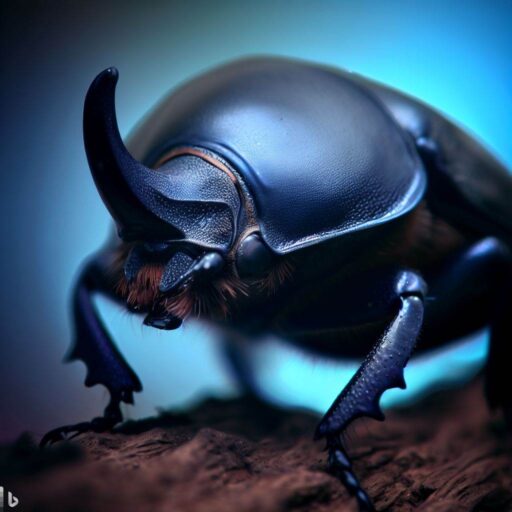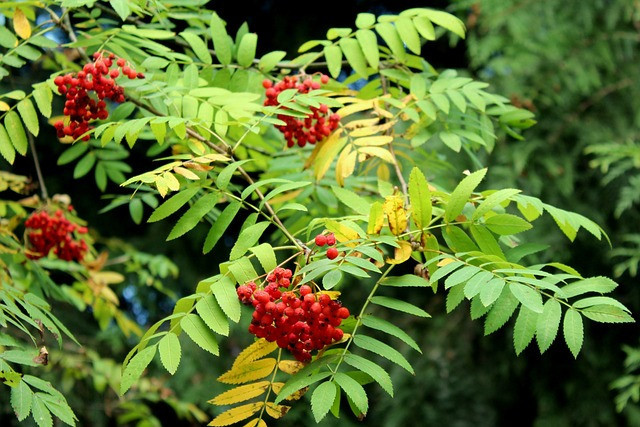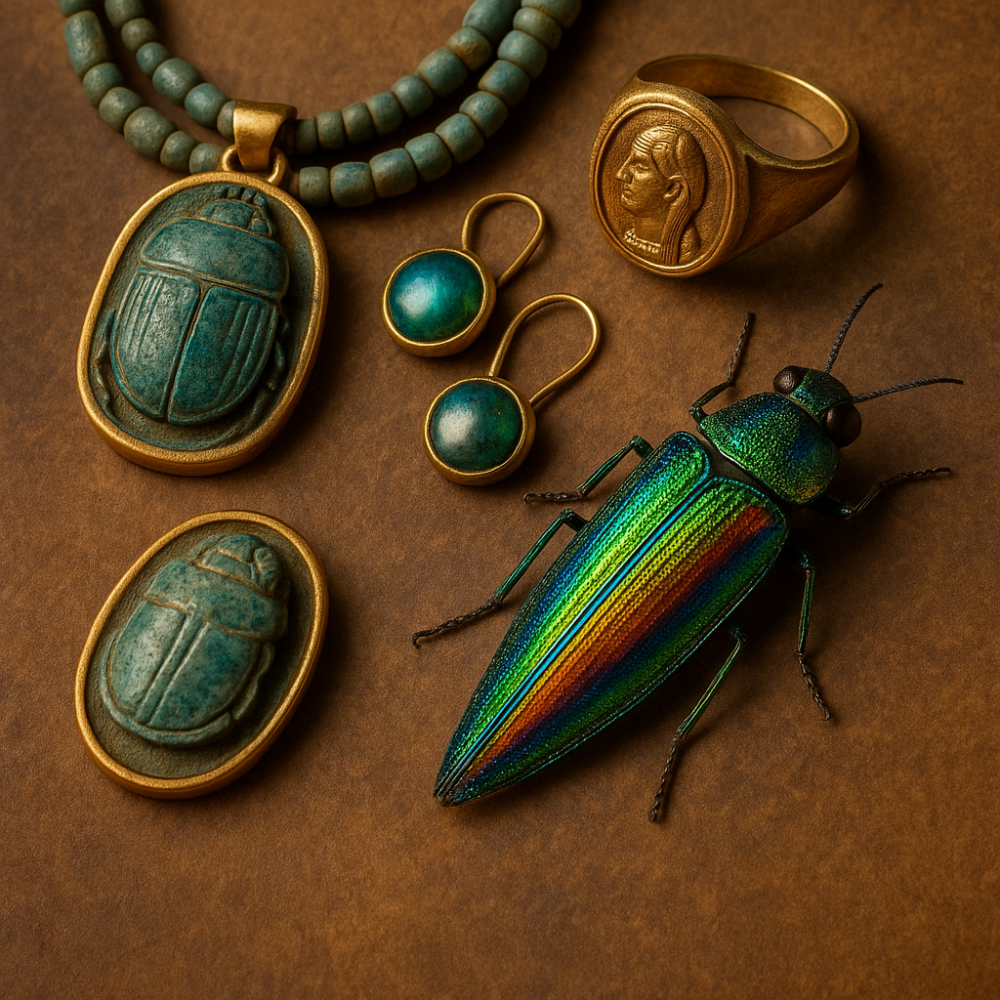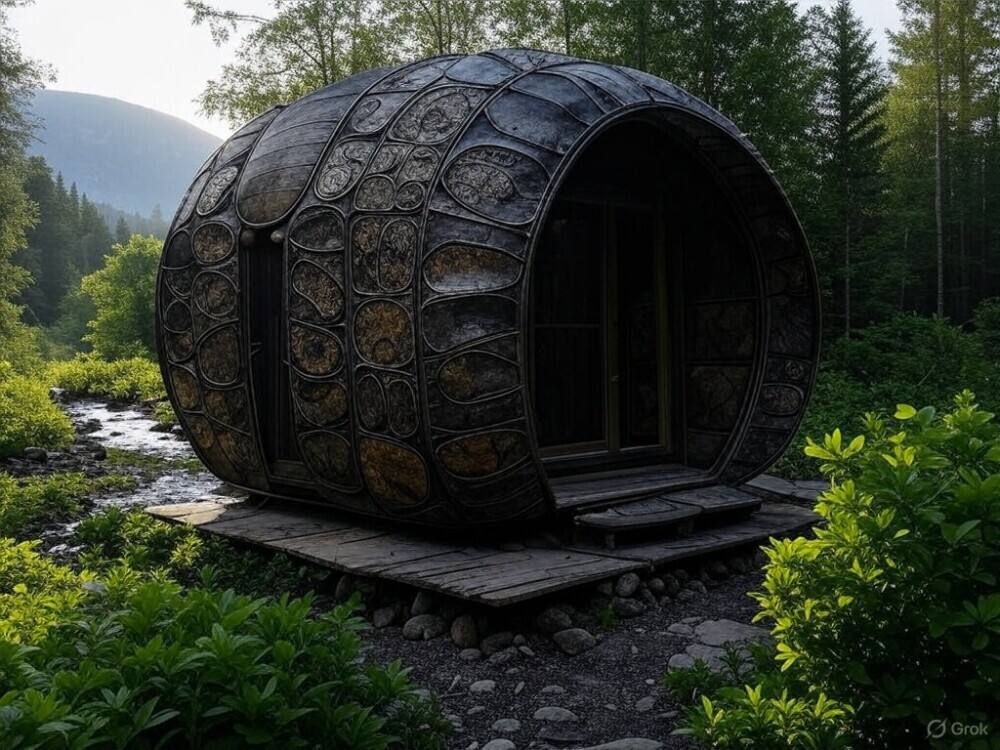.jpg)
- Emerald Ash Borers are a threat to ash trees and can cause significant damage.
- Identifying signs of emerald ash borer infestation, such as distinctive damage on ash trees, woodpecker damage, and D-shaped exit holes, can help in early detection.
- Preventing and managing emerald ash borer infestations involve practicing transportation practices to prevent spread, early detection, quick action, and treatment options for infested trees.
The Emerald Ash Borer, also known as Agrilus planipennis, is an invasive and destructive insect species. Its metallic green color is unique to its native Asia, where it was first discovered in North America in 2002.
These beetles feed solely on ash trees. They lay their eggs on the phloem, which is the inner bark of the tree.
The larvae then hatch and bore into the wood, creating winding tunnels as they consume the nutritious inner layers of the tree.
This disrupts the tree’s ability to transport water and nutrients, eventually leading to its decline and death.
Their diet is restricted to ash trees, making them highly specialized pests that can colonize and decimate ash tree populations.
Thus, there is an urgent need to develop strategies for combating their spread and impact.
Insecticides, biological control agents, and the removal and disposal of infested trees are some measures being taken.
Also, research is being done to develop resistant ash tree varieties and early detection techniques.
Preserving the ecological balance and biodiversity of our forests is of utmost importance, thus increasing our understanding of the feeding habits and life cycle of Emerald Ash Borers is essential.
Emerald Ash Borers: The Threat to Ash Trees

Emerald Ash Borers: The threat to ash trees and the importance of understanding their description,
identification, life cycle, and feeding habits.
Description and Identification of Emerald Ash Borers
Emerald Ash Borers are a destructive type of beetle that pose a serious threat to ash trees. They’re small and metallic green, with a slender, elongated body and a flattened back.
Plus, their wings are red or purple underneath – super easy to spot when they fly.
The life cycle starts when adult beetles lay eggs on the bark of ash trees.
Once the eggs hatch, the larvae bore into the tree and feed on the phloem layer.
This disrupts the nutrients, leading to the tree’s decline and death if untreated.
When they’re done feeding, the larvae transform into adults and emerge from the tree through D-shaped exit holes.
Other signs of infestation include serpentine galleries underneath the bark, woodpecker damage and, of course, the D-shaped holes.
To prevent and manage these pests, strict transportation practices should be implemented. Plus, early detection is key in controlling them.
Treatment options such as insecticide injections and systemic treatments can help manage infestations and protect healthy trees.
Life Cycle and Feeding Habits
Emerald Ash Borers are a damaging beetle species. They have 4 stages: egg, larva, pupa and adult.
Females lay eggs on the bark of ash trees.
Larvae feed on the inner layers of the tree for two years.
Then they create D-shaped holes to turn into adults.
Their feeding habits weaken and kill the canopy of ash trees. They feed on ash trees (Fraxinus spp.) only.
They can adapt to healthy or stressed trees. This can cause significant damage to ash populations in affected areas.
To stop the spread of these pests, it’s important to understand their life cycle and feeding habits.
Early detection is necessary to control infestations.
When signs of infestation are seen, insecticide application and trunk injections should be done quickly.
In conclusion, Emerald Ash Borers have a dangerous life cycle and feeding habits.
Knowing about them is crucial to preserve ash tree populations and maintain ecological balance in affected areas.
Signs of Emerald Ash Borer Infestation
The signs that indicate an infestation of emerald ash borers include:
- Distinctive damage on ash trees
- Woodpecker damage serving as an indicator
- The presence of D-shaped exit holes
These telltale signs provide valuable clues that can help identify the presence of emerald ash borers and take appropriate action.
Distinctive Damage on Ash Trees
Emerald Ash Borers can cause a distinctive kind of damage on ash trees that is easy to spot. They create S-shaped galleries under the bark, hindering the tree’s ability to transport water and nutrients.
This leads to thinning or dying branches, crown dieback, and canopy loss.
These pests feed on the outer bark layer. This causes vertical splits in the wood and eventually kills the cambium layer, leading to the peeling and cracking of bark.
Other signs of an infestation are d-shaped exit holes. These are 1/8 inch wide and are made when adult beetles come out from beneath the bark.
If you want to protect your ash trees from Emerald Ash Borers, you must take action quickly when you spot any of these signs.
Contact a professional arborist or local authorities for diagnosis and management strategies. Acting fast is key as these pests can quickly destroy whole populations of ash trees.
By doing this, we preserve the ecosystems that rely on these trees.
If you see woodpeckers picking at your ash trees, it might be because of the unwelcome Emerald Ash Borers inside.
Woodpecker Damage as an Indicator
The Ash Tree is showing signs of Woodpecker damage, which means the Emerald Ash Borer has arrived!
They’ve even set up their own building firm, leaving behind some remarkable D-shaped holes as they go!
D-Shaped Exit Holes
Beetles emerging through D-Shaped Exit Holes is an important part of Emerald Ash Borer’s life cycle.
After months of feeding on ash tree inner bark, the mature larvae come out, creating these distinctive holes in the outer bark.
These holes are a clear sign of infestation, a valuable aid for early detection.
Other signs like woodpecker damage and ash tree damage can indicate Emerald Ash Borer infestations too.
However, D-Shaped Exit Holes are different. Their shape helps distinguish them from other insect holes, making them great for identifying this particular pest.
Plus, their uniform size and look makes them easy to spot when inspecting ash trees.
It is important to regularly check ash trees for D-Shaped Exit Holes to manage Emerald Ash Borer infestations.
Finding them early allows for action to stop the spread of this pest. Removing or treating infested trees can help reduce the damage and save vulnerable ash tree populations.
Regular monitoring and quick action can protect ash tree ecosystems in affected areas.
Prevent and manage Emerald Ash Borer infestations – nothing ruins a backyard faster than tiny tree vampires.
Preventing and Managing Emerald Ash Borer Infestations
Transportation practices, early detection, and treatment options are key in preventing and managing emerald ash borer infestations.
Implementing effective measures to control and limit the spread of these invasive pests is essential for preserving the health of ash trees.
By understanding and implementing strategies outlined in this section, we can minimize the impact of emerald ash borers and maintain the vitality of our ash tree populations.
Transportation Practices to Prevent Spread
Transportation measures are key to stopping the spread of emerald ash borers. These beetles are a huge threat to ash trees, and they can rapidly spread if no precautions are taken.
To prevent this, we should:
- Package and contain stuff properly, like firewood and ash wood products, to avoid unintentionally transporting the beetles or their larvae.
- Set up quarantine areas to restrict the movement of potentially infested materials and keep the beetles in known affected regions.
- Educate loggers, arborists, and homeowners about the importance of transportation practices to prevent emerald ash borers from spreading.
Moreover, regulations on moving certain materials close to infested areas, regular inspections of transport vehicles, and coordinating with adjacent regions are also important.
By taking these transportation practices and other preventive actions, we can lessen the risk of infestations and safeguard our ash trees. By being careful with transport activities, we can help protect natural ecosystems for generations to come.
Early Detection and Quick Action
Emerald Ash Borer infestations can have devastating effects on ash trees. Early detection and quick action are crucial to prevent the spread and reduce damage. Follow this 5-step guide:
- Monitor ash trees regularly. Look for signs of infestation like thinning canopies, discolored leaves, or bark cracks.
- Learn about Emerald Ash Borers. Look out for their metallic green color, D-shaped exit holes, and S-shaped tunnels beneath the bark.
- Report suspicious findings. Tell your local forestry or agriculture department right away.
- Implement quarantine measures. Keep potentially infested wood materials from spreading.
- Consider treatment options. Insecticidal sprays and injections may be available. Ask a professional arborist or tree care specialist for help.
Early detection and quick action are key to managing Emerald Ash Borer infestations. Be vigilant, report signs, and take control measures to protect ash trees. If your tree is infested, try praying, an exorcism, or call an arborist.
Treatment Options for Infested Trees
Treating infested trees requires different strategies to manage the damage caused by emerald ash borers. These plans are meant to protect the health of ash trees.
- Chemical Treatments: Insecticides on the tree bark or injected into the trunk can kill/repel emerald ash borers. Professionals are needed for this and it may need to be done again.
- Biological Control: Natural enemies like parasitic wasps can be released into infested areas. This is more eco-friendly but takes time for results.
- Tree Removal: When the tree cannot be saved, removal and proper disposal is necessary to stop the spread of emerald ash borers.
- Quarantine Measures: Quarantines & restriction of ash wood products helps. This includes firewood transportation & wood processing facilities.
- Monitoring Programs: Monitoring & inspecting ash trees detects signs of infestation. This allows for quick intervention & better success.
- Public Awareness & Education: Teaching people about emerald ash borers, their signs, and treatment options is important. Increased awareness creates proactive measures.
Regional regulations or advice from local authorities or arboriculture experts may be needed.
Conclusion
The emerald ash borer is devastating ash tree populations and must be stopped.
We need to act now, using tree removal and replacement, insecticide treatments, and quarantine measures.
Taking action now can slow the spread of this invasive species and save ash trees and other species at risk.
Without taking action, irreversible destruction and the loss of valuable resources could occur.
Let’s work together to protect our forests and prevent further destruction caused by the emerald ash borer.
These pests feed on ash trees and disrupt nutrient transportation, leading to the decline and death of trees.
The emerald ash borer has had a large impact on ash tree populations in North America. Spread of these pests is promoted through firewood or nursery stock transport.
To prevent further spread, quarantine regulations must be enforced.
Management strategies, such as insecticides and biological control agents, can also help protect ash trees from the emerald ash borer.
The emerald ash borer could threaten other species in heavily impacted areas.
Therefore, monitoring and managing populations is necessary to protect forest ecosystems.
Action must be taken now to prevent the emerald ash borer from causing more destruction.
Our collective efforts are crucial to save ash trees and other tree species at risk. Let’s act now to protect our valuable resources.
Some Facts About What Do Emerald Ash Borers Eat:
- ✅ The emerald ash borer primarily feeds on ash trees, but it has been found on other trees in rare cases.
- ✅ In its early stages, the emerald ash borer tunnels into trees and feeds on the area just underneath the bark.
- ✅ As adults, the emerald ash borer eats the leaves of ash trees.
- ✅ All ash trees, regardless of their health or age, are potential targets for the emerald ash borer.
- ✅ Early detection and treatment can help protect ash trees from the emerald ash borer.
FAQ
What do emerald ash borers eat?
Emerald ash borers primarily feed on ash trees, burrowing into the tree’s bark and feeding on the area just underneath. As adults, they eat ash tree leaves.
Are all ash trees potential targets for emerald ash borers?
Yes, all ash trees, regardless of their health or age, are potential targets for emerald ash borers.
What are the signs of an emerald ash borer infestation?
The signs of an emerald ash borer infestation include woodpecker damage on ash trees as they feed on the beetle larvae, and the emergence of adult beetles leaving distinct D-shaped exit holes in the tree trunk.
How can I protect my ash trees from emerald ash borers?
Early detection is crucial in protecting ash trees from emerald ash borers. If an infestation is confirmed, a professional arborist can assess the tree’s health and determine if it is a good candidate for treatment.
What types of treatments are available for emerald ash borer infestations?
There are four types of treatments available for emerald ash borer infestations. A professional arborist will decide on the best approach and timing for the application based on the specific situation.
What steps should I take to prevent the spread of emerald ash borers?
To prevent the spread of emerald ash borers, it is important not to transport wooden materials such as shipping pallets, logs, or firewood from areas where the pest is present.
Instead, purchase firewood at your camping destination to avoid inadvertently transporting the beetle.





Leave a Reply